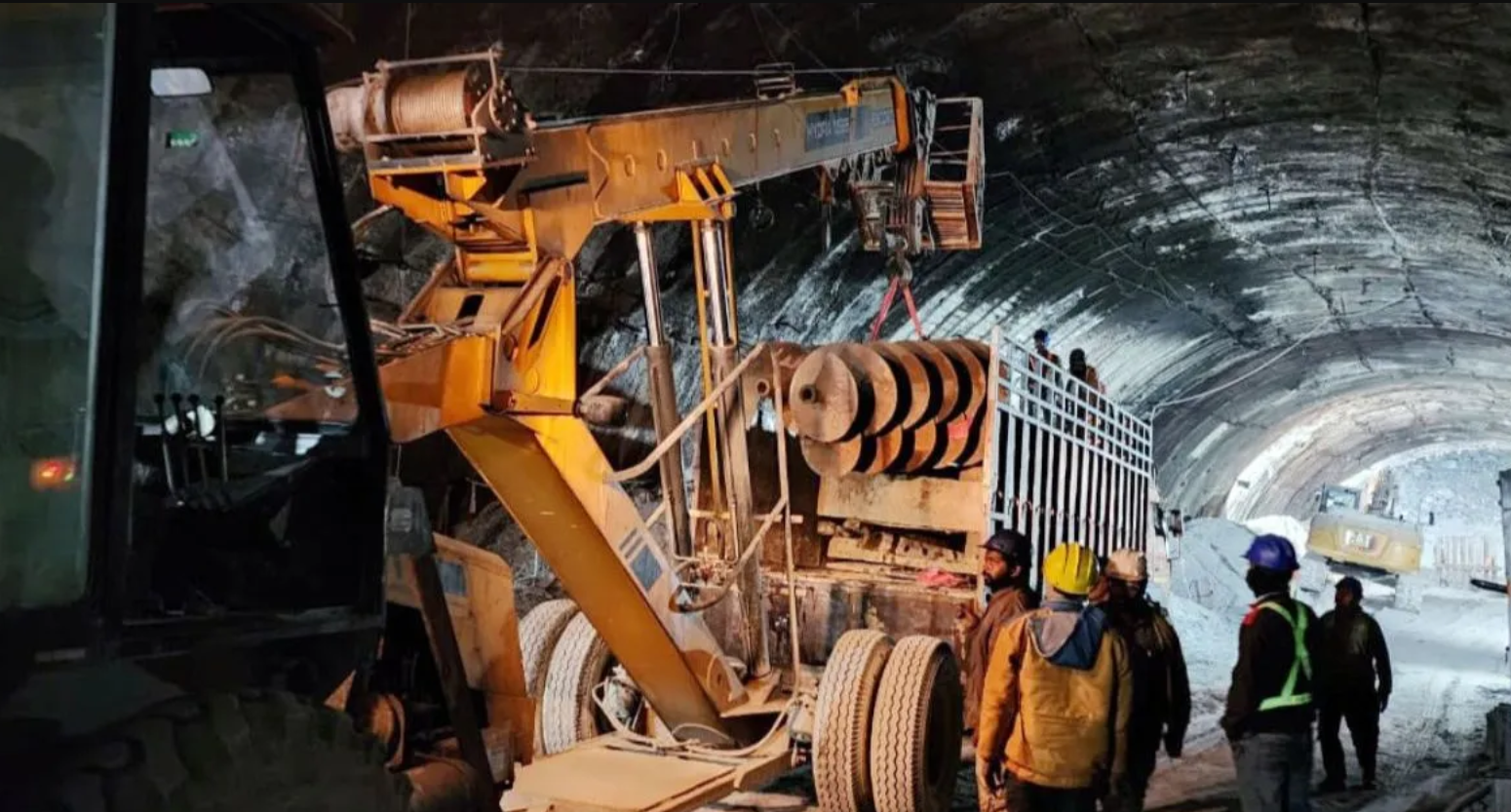Highlights
- Auger machines crucial for drilling through tunnel debris.
- Trenchless technology used for safe pipe installation.
- Cameras and sensors monitor conditions inside the tunnel.
- Pipeline and tray systems deliver essentials to trapped workers.
In the harrowing scenario of the Uttarkashi tunnel collapse, where 41 workers are trapped, a remarkable synergy of technology and human effort is being witnessed.
Let’s find out the diverse technological tools and strategies being employed in this critical rescue mission.
Technological Arsenal in the Rescue Effort
The forefront of this operation is marked by the deployment of powerful auger machines.
These machines, equipped with large helical screw blades, have been pivotal in piercing through the debris to forge a pathway to the trapped workers.
The efficacy of these machines underscores the critical role of mechanized solutions in such challenging rescue operations.
Innovative Trenchless Technology
A notable innovation in the rescue arsenal is the use of trenchless technology.
Traditionally applied in underground utilities, this technique enables the installation of pipes without extensive excavation.
In the current scenario, it’s proving invaluable in establishing a stable supply route to the workers, minimizing the risk to the already precarious tunnel structure.

Cameras and Sensors
The operation also integrates advanced surveillance and monitoring technologies.
Though details about the specific types of cameras and sensors are not fully disclosed, the likely inclusion of fiber optic cameras and seismic sensors plays a critical role.
These tools are essential for assessing the condition inside the tunnel and ensuring a safe environment for both the rescuers and the trapped workers.
Pipe Networks and Tray Systems
Beyond machinery, the rescue operation also employs a sophisticated network of pipes and tubes.
Initially, a four-inch pipeline was utilized to deliver essential supplies.
However, a significant development on November 20 saw the insertion of a larger six-inch pipeline, allowing for the transport of greater quantities of food and other necessities.
Moreover, a specialized tray system has been introduced, enabling rescuers to directly deliver food to the workers.
This aspect of the operation highlights the adaptability and ingenuity of the rescue teams in ensuring the well-being of those trapped.
FAQs
What technology is being used in the Uttarkashi tunnel rescue operation?
The rescue team is using advanced auger machines for drilling, trenchless technology for pipe installation, fiber optic cameras, and seismic sensors for monitoring, along with a sophisticated pipeline and tray system for delivering supplies to the trapped workers.
How is trenchless technology aiding in the rescue efforts?
Trenchless technology is crucial in the Uttarkashi tunnel rescue as it allows for the installation of lifeline pipes without extensive excavation, thus preventing further destabilization of the tunnel structure and ensuring a safer environment for the rescue operation.
What role do cameras and sensors play in the rescue operation?
Cameras and sensors, likely including fiber optic cameras and seismic sensors, are vital in the Uttarkashi tunnel rescue for monitoring conditions inside the tunnel, locating the trapped workers, and ensuring the stability and safety of the rescue environment.
